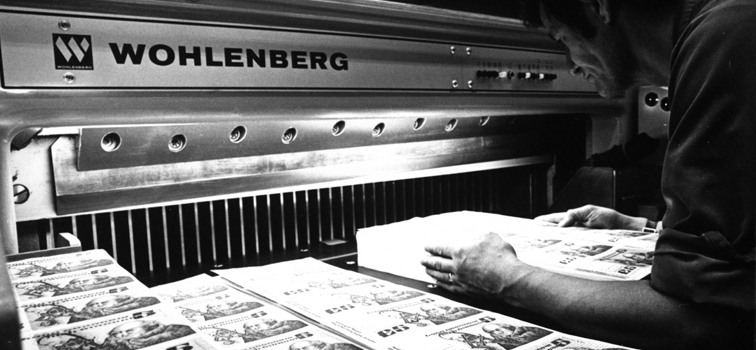Central Bank of Ireland opens archives for public research
31 August 2017
Press Release

- Archives made available for public research for the first time.
- Archive material includes objects, documents and ledgers dating from 1786 to 1986.
- Material to be released in future on a ’30 Year Rule’ basis.
The archives of the Central Bank of Ireland have been opened for public research for the first time. The archives include a range of materials created and acquired by the Central Bank including objects, documents and ledgers dating from 1786 to 1986. From today records created, maintained and received by the Central Bank, which have reached 30 years of age, will be available. All materials will be available to interested researchers to review at a dedicated public research room in the new campus at North Wall Quay, with a minimum of 48 hours’ notice required.
The Central Bank of Ireland’s archive tells the story of economic development and progression in Ireland, the establishment and the design of Irish currency and the day-to-day workings of the Central Bank, with the earliest records dating back to 1786.
The archival collections contain:
- Over 12,000 paper files;
- Over 2,000 Central Bank publications;
- Over 4,000 photographic prints;
- Over 560 architectural plans and drawings;
- Over 250 bound ledgers;
- Materials relating to the Currency Commission, the Commercial Buildings Company, and various properties owned by the Central Bank.
The Central Bank has developed an online catalogue of the archival materials, to allow the public to search online and identify what they would like to review. Appointments can also be made online to access the archival materials in the reading room.
The new Central Bank headquarters in North Wall Quay was designed specifically to incorporate an archive reading room and supporting facilities to allow researchers to consult and view archival material of interest to them. The new building also houses a free Visitor Centre, open to the public from 10am – 4pm weekdays and which is currently hosting two exhibitions, the first telling the story of the development of Ireland’s currency and the second on establishment of the Euro.
The Central Bank has further committed to releasing archival material in future on a ’30 Year Rule’ basis, as applies across the public sector.
Speaking on the official launch of the archives Governor Philip Lane said:
“The opening of the archives is in line with our commitment to increase transparency and promote public understanding of the role and functions of the Central Bank. Wider access to the archives will also increase the volume of long-term economic and banking data available to policy makers and scholars. While our official publications have always been in the public, the reasoning, in many cases, behind our policy decisions will now also be available to scholarly researchers. I believe that this will make a significant contribution to economic, financial and social research.”
Notes
- The Central Bank of Ireland is currently exempt from the provisions of the National Archive Act 1986 i.e. it is not included on the schedule of public sector bodies subject to the Acts provisions. However, the Central Bank will release archival material in future on a ’30 year rule’ basis, as applies across the public sector.
- Interested members of the public can make an appointment to view archival material by emailing [email protected] or phoning 01-2246424. The archives online catalogue is also available along with an FAQ page.
- The Central Bank Visitor Centre is open to the public from 10am to 4pm weekdays, and is currently hosting two exhibitions. ‘Pounds, Shillings & Independence’ tells the story of the development of Ireland’s currency following the establishment of Saorstát Éireann in 1922. This exhibition celebrates the work of the Currency Commission, which was established in 1927 to design, issue, manage and control an entirely new and independent Irish currency. The Central Bank is also hosting the European Central Bank’s ‘Euro Exhibition’ which takes visitors on a tour of euro currency, from its beginnings back in history, to the single currency we use today. The exhibition has several distinct elements, focusing on euro banknotes, euro coins, security features, the overall history of money and a kids’ corner for our younger guests.